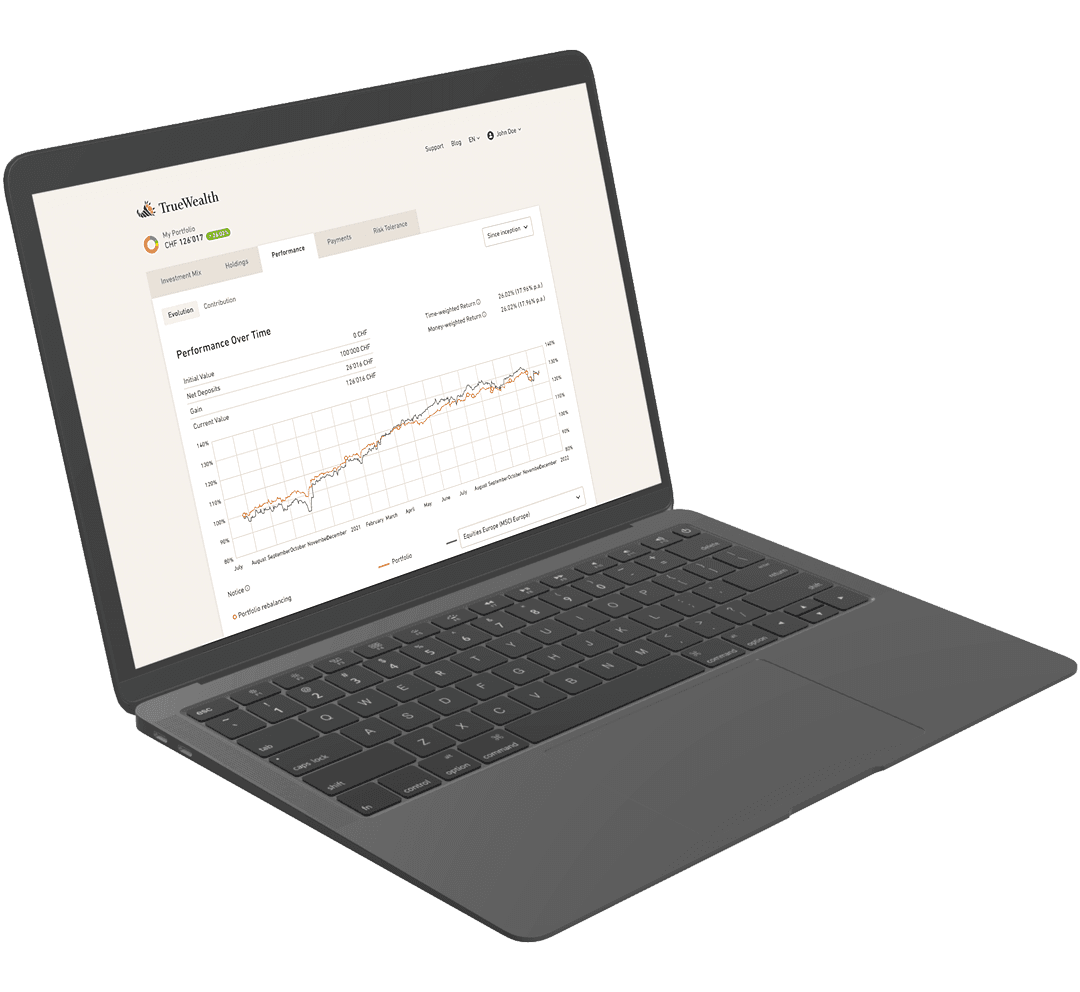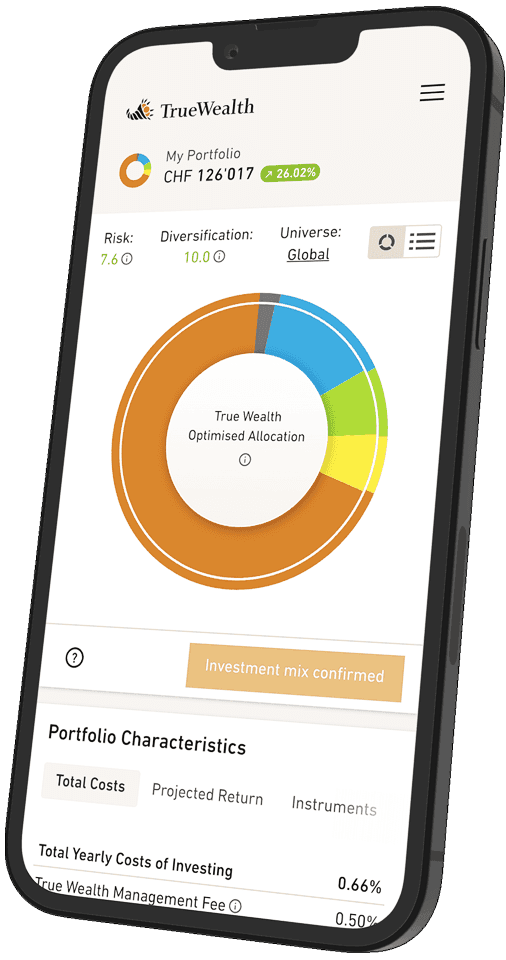
Money-weighted return: How to expose tactical trading
At True Wealth, we measure returns using two methods: money-weighted and time-weighted. The difference indicates whether you are trying to outperform the market.
Professionals measure investment returns using two fundamentally different methods: money-weighted and time-weighted. At True Wealth, we show both values. This is because the return on your portfolio depends largely on the investment strategy, i.e. the investment mix. However, your investment result will also depend on when you are invested and to what extent. In other words, whether and when you make deposits and withdrawals.
The two calculation methods only match if you do not make any further deposits or withdrawals apart from the initial investment. In all other cases, they show you the resulting market timing effect.
The time-weighted return measures the quality of the strategy
Whether you are looking at the return over the period of a year, a few months or the entire time since the start of your portfolio, the time-weighted return measures everything that has happened within your portfolio.
The time-weighted return acts as if you had invested the same amount the whole time. Like all asset managers, we factor out the effect of deposits and withdrawals.
Did you stick to the asset allocation we suggested to you at the beginning? Or did you change your strategy and adjust the asset allocation? The time-weighted return is the ideal measure to evaluate the basic strategy.
It makes different investments comparable. You can use the time-weighted return to compare your True Wealth portfolio with another investment. Regardless of whether you have actually made this investment elsewhere – or only considered it.
The money-weighted return measures the consequences of deposits and withdrawals
The money-weighted return (sometimes also called value-weighted return) also takes into account all deposits and withdrawals.
Are both returns the same for you?
Then you have most likely not changed the investment amount in your portfolio during the period under review. (Incidentally, this is why the two return values are always identical in a virtual test account with us. We manage such a test account for you with CHF 100'000 from the start – without subsequent deposits or withdrawals).
Do the two values differ for you?
Then it's worth taking a closer look. You may have deposited or withdrawn money during the reporting period. (Or perhaps both.) An inflow or outflow of capital always has an impact on performance. The money-weighted return measures these effects. It is then higher or lower than the time-weighted return.
Do you need to pay attention to this difference?
The time-weighted return makes the investment strategy comparable
Did you deposit money later because you didn't have it before – for example, because you are building up your assets month by month? Have you withdrawn money because you needed it elsewhere for a few months?
Then there is a difference between the two return values. In the end, only the money-weighted return counts for your investment result in Swiss francs. But if you want to compare your investments with other investments or a market index, you should use the time-weighted return.
Here is an example of why this is the case:
Let's say stocks did poorly from January to September and lost value (let's say -5%), but make it all up in the last quarter (let's say +7% in the last quarter). If you started the year with CHF 100'000 and made no further deposits or withdrawals, your portfolio will be in the black at the end of the year. However, if you sold shares at the end of September and liquidated half of your portfolio, you will have lost CHF 1'850 over the year. In other words, the time-weighted return for the year was positive, but your money-weighted return was negative.
What return should you now compare against a market index? That depends. If you had entered for tactical reasons at the end of September, you should also fairly compare the money-weighted return against the index, because it includes the effect of your market timing. However, if you took the money out of the portfolio at the end of September because you needed it right then, you should compare the time-weighted return against the index. Because your investment strategy was good.
The same applies in the opposite case, where you invested additional money at the end of September into the bear market. Then you would have had a good hand in terms of timing and made an additional profit (the money-weighted return would then be greater than the time-weighted return).
The money-weighted return reveals how good your timing is
The money-weighted return is therefore important if you have tried to outperform the market. For example, if you had a forecast about the market and deliberately traded tactically according to it. Or possibly even without knowing it.
Two questions will help you track down this market timing:
Are you intentionally engaging in tactical timing? For example, have you deliberately withdrawn some of your assets from the portfolio because you feared a correction on the stock market? Then the money-weighted return will show you how successful you were with your tactics.
Are you unintentionally engaging in tactical timing? Some investors act tactically by mistake. Do you hold back when investing and only invest a portion of your larger assets in stages each month? Then you can see from the money-weighted return whether your restraint has paid off.
If your money-weighted return is better than the time-weighted return, congratulations! Your market timing has improved your return, at least in the reporting period under review. But be careful: market timing is often a matter of luck, almost nobody manages to beat the market on a regular basis.
Is your money-weighted return below the time-weighted return? Then we would like to remind you of the guidelines of passive investing: don't even try to time the market. Be in the markets. As comprehensively and as completely as possible.
Let the market work for you.
About the author

Founder and CEO of True Wealth. After graduating from the Swiss Federal Institute of Technology (ETH) as a physicist, Felix first spent several years in Swiss industry and then four years with a major reinsurance company in portfolio management and risk modeling.

Ready to invest?
Open accountNot sure how to start? Open a test account and upgrade to a full account later.
Open test account